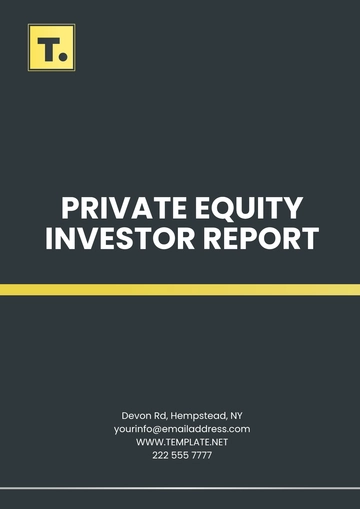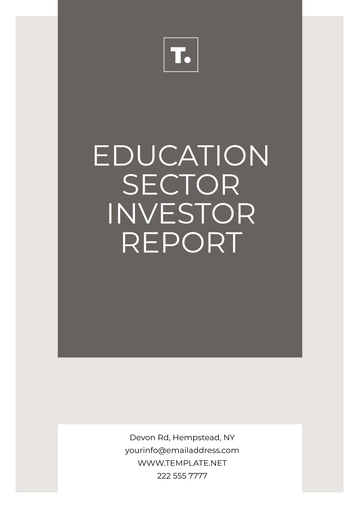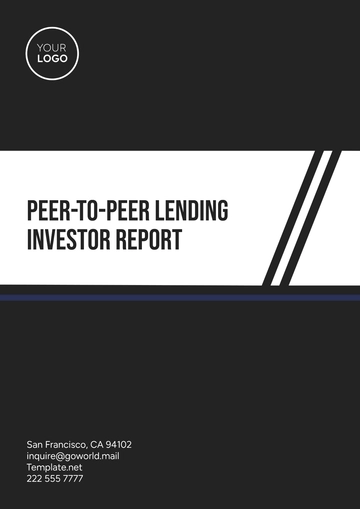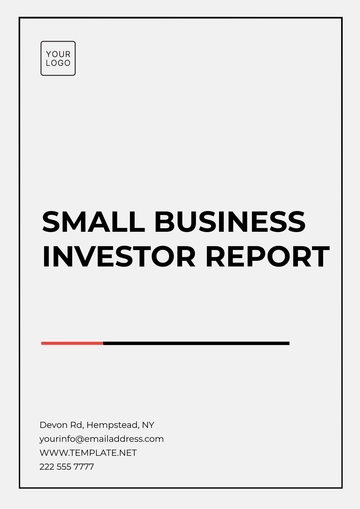Free Startup Seed Funding Strategy Report
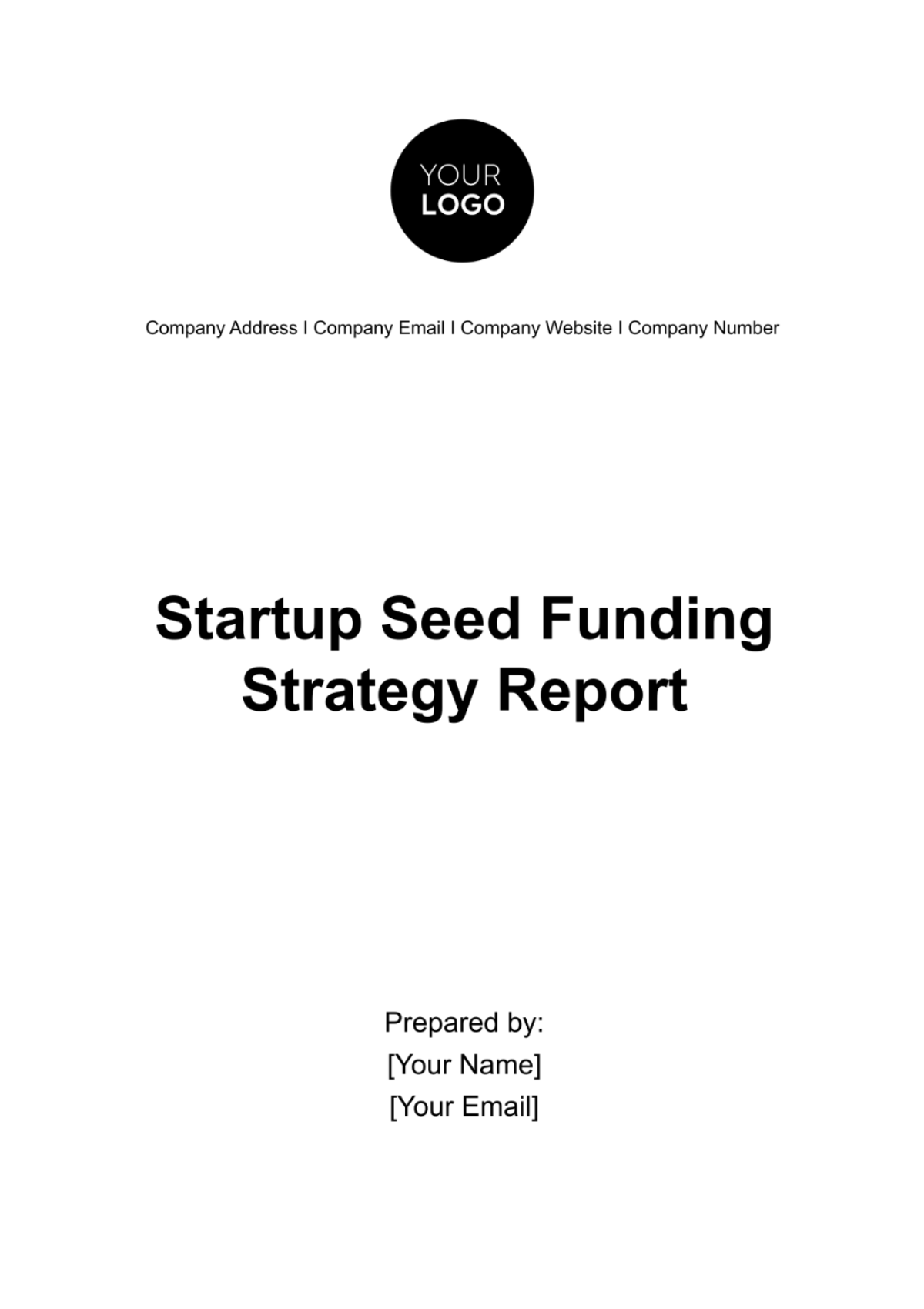
1. Executive Summary
In the competitive landscape of startup ventures, securing seed funding emerges as a pivotal milestone, marking the transition from concept to early operational stages. This report, meticulously compiled with insights drawn from reliable data and real-world examples, aims to demystify the array of seed funding strategies available to entrepreneurs. Our objective is to furnish startup founders with a granular understanding of the seed funding ecosystem, enabling them to navigate this critical phase with informed confidence. By elucidating the nuances of various funding avenues, their potential impacts on startup equity and growth trajectories, and the strategic considerations inherent to each, this document aspires to be an indispensable tool in the strategic arsenal of emerging ventures. The guidance provided herein is designed to not only illuminate the path to successful funding but also to align such financial milestones with the long-term vision and sustainability of the startup.
2. Seed Funding Overview
Seed funding represents the initial infusion of external capital into a startup, intended to support the transition from ideation to market entry. This early-stage financing is pivotal, offering the financial runway necessary for product development, market research, team expansion, and other critical operational needs. Unlike later-stage investments, seed funding is not just about capital; it's also about validation. Securing seed investment signals market belief in the startup's potential, often attracting further attention and resources.
Seed funding typically comes in exchange for an equity stake in the company, though the terms and structures can vary widely. This exchange marks one of the startup's first valuations, setting a precedent for future investment rounds. It's a process that requires careful negotiation and a deep understanding of the long-term implications for company ownership and control.
Given its formative role in a company's journey, seed funding is more than just a financial transaction. It's a partnership that can bring invaluable industry insights, networks, and mentorship opportunities to the table. Startups must, therefore, approach this phase with a strategy that extends beyond immediate capital needs, considering the broader impact on the company's trajectory, culture, and governance.
The landscape of seed funding is diverse, encompassing a range of sources from angel investors and venture capitalists to crowdfunding platforms and personal networks. Each of these avenues carries its own set of expectations, investment philosophies, and partnership dynamics. For instance, angel investors, often being entrepreneurs themselves, may offer a wealth of industry experience and a more personal engagement model. In contrast, venture capitalists can provide larger sums of capital and access to a wide professional network but might demand a more significant equity stake and a formalized governance structure.
Understanding the nuances of these funding sources, the typical investment sizes they offer, and the equity stakes they commonly request is crucial. This knowledge not only aids in selecting the most aligned investors but also in crafting a compelling pitch that resonates with the specific interests and investment criteria of potential backers.
As startups embark on this funding journey, the decision-making process must be underpinned by a clear vision of the company's future. The chosen seed funding strategy should not only address immediate financial needs but also support the startup's growth ambitions, market positioning, and long-term value creation. It's a balancing act between securing necessary capital and maintaining the strategic direction and operational autonomy of the venture.
In conclusion, seed funding is a critical juncture in a startup's life cycle, offering both opportunities and challenges. This report aims to provide startups with the insights and frameworks needed to navigate this phase effectively, laying a solid foundation for future growth and success.
3. Types of Seed Funding
In startup financing, seed funding emerges as the critical initial infusion of capital that can catalyze a startup from concept to early operational stages. This segment of the report delves into the various avenues available for seed funding, each characterized by its unique advantages and considerations, offering a comprehensive overview for startups evaluating their seed funding strategy.
Angel Investors
Angel investors, often affluent individuals with a keen interest in nurturing early-stage startups, provide capital in exchange for equity or convertible notes. These investors are not merely financiers; they often bring a wealth of experience, industry insights, and valuable networks to the table. The engagement with angel investors typically offers more flexible investment terms, personalized mentorship, and strategic guidance, making it an attractive option for startups seeking not just capital but also industry expertise. However, the capital amount from angel investors may be comparatively limited, and their hands-on involvement might not align with all founders' preferences.
Venture Capitalists
Venture capitalists (VCs) represent firms or individuals that invest in startups showing high potential for growth, offering substantial capital in exchange for significant equity stakes. Venture capital funding is instrumental for startups poised for rapid scale-up, market expansion, or extensive product development. The key advantage of VC funding lies in the substantial capital infusion and the strategic support, including access to broad networks of partners, customers, and subsequent funding rounds. The primary considerations for startups engaging with VCs include the potential dilution of equity and the pressure to achieve aggressive growth targets to meet the VCs' return expectations.
Crowdfunding
Crowdfunding stands out as a novel approach to seed funding, leveraging the power of the internet to pool funds from a wide audience. This method is particularly effective for startups with products or services that resonate on a broader scale, allowing them to validate market demand directly through consumer engagement. Crowdfunding not only provides capital but also serves as a potent marketing tool, building a community of early adopters and advocates. The challenges associated with crowdfunding include the need for compelling storytelling, the effort required to run a successful campaign, and the obligation to fulfill public commitments, which may impose additional operational pressures.
Family and Friends
The initial rounds of seed funding often tap into the personal networks of founders, including family and friends. This source of capital is characterized by its informal nature, often offering more lenient terms and lower expectations for rapid returns. Funding from personal networks is built on inherent trust and shared belief in the founder's vision, providing a supportive base to kickstart the venture. However, intertwining personal relationships with business finances can introduce complexities, especially in scenarios of underperformance or failure, potentially risking personal relationships.
The landscape of seed funding offers a spectrum of options for startups, each with distinct implications for equity, control, and strategic alignment. Angel investors and VCs provide not just capital but invaluable industry insights and networks, albeit with considerations around equity dilution and growth expectations. Crowdfunding presents an innovative way to engage with and expand the customer base, while funding from family and friends offers a supportive, albeit potentially complex, starting point. Startups must carefully evaluate these options, considering their immediate financial needs, long-term strategic goals, and the broader impact on the company's trajectory and founder autonomy. Selecting the right seed funding avenue is a pivotal decision that lays the groundwork for the startup's future growth and success.
4. Factors to Consider
Selecting an appropriate seed funding strategy is a nuanced decision that startups must navigate with care. This section of the report aims to outline the critical factors that founders should consider when evaluating their seed funding options. These considerations are instrumental in shaping a startup's financial landscape, influencing everything from operational autonomy to strategic flexibility. Understanding these factors will empower startups to make informed decisions that align with their long-term objectives and operational ethos.
Factors to Consider in Seed Funding:
Amount of Funding Required
A foundational consideration is the quantum of capital required to reach the next milestone. Startups need to assess their operational burn rate, projected growth trajectories, and any unforeseen contingencies to determine the amount of funding necessary. This assessment ensures that the chosen funding strategy can adequately support the startup's short-term needs without compromising long-term sustainability.
Cost of Capital
The cost of capital encompasses not just the financial implications of funding but also the strategic costs associated with different funding types. Equity funding, for example, may dilute founders' ownership, potentially affecting future decision-making and profit-sharing. Conversely, debt or convertible notes may come with repayment obligations that could impact cash flow. Understanding these costs is crucial for startups to maintain a healthy balance between growth financing and financial health.
Investor Expectations
Investors bring their own set of expectations regarding growth, scalability, and return on investment. Aligning with investors who share the startup's vision and operational philosophy is critical to fostering a synergistic relationship. Mismatches in expectations can lead to strategic discord and operational friction, hindering the startup's ability to execute its vision effectively.
Control and Influence
The degree of control and influence retained post-funding is a significant consideration. Founders must evaluate how different funding options will impact their control over strategic decisions and company direction. Maintaining operational autonomy is often essential for founders to steer the startup in alignment with their original vision and values.
5. Comparative Overview of Funding Sources
To contextualize these considerations, the following table provides an overview of the typical investment ranges and equity stakes associated with various seed funding sources:
Funding Source | Average Investment ($) | Typical Equity Stake |
|---|---|---|
Angel Investors | 25,000 - 100,000 | 10 - 20% |
Venture Capitalists | 500,000 - 5M | 20 - 40% |
Crowdfunding | 10,000 - 50,000 | Varies |
Family and Friends | 5,000 - 50,000 | 5 - 10% |
This table serves as a strategic tool for startups to assess the potential financial implications of engaging with different types of investors. It highlights the variability in investment sizes and equity stakes, offering a preliminary framework for founders to gauge the alignment of each funding source with their specific needs and considerations.
Choosing the right seed funding strategy is a multifaceted decision that requires a thorough evaluation of the startup's financial needs, the cost of capital, investor expectations, and the desired level of control and influence. By carefully considering these factors and analyzing the typical investment parameters of various funding sources, startups can make strategic decisions that support their growth objectives while maintaining alignment with their foundational principles and operational autonomy. This thoughtful approach to seed funding not only secures the necessary capital for growth but also lays a solid foundation for the startup's future success.
6. Conclusion
Choosing the right seed funding strategy is a critical decision for startups. To secure adequate funding and growth, it’s crucial to consider the amount of funding required, cost of capital, investor expectations, and control factors. The seed funding strategy will set the pace for the company's future investments and growth potential. The considerations of funding amount, capital cost, alignment with investor expectations, and the preservation of control and influence are not merely transactional factors but foundational elements that will sculpt the startup's developmental path and its capacity to innovate, scale, and thrive in competitive markets. The strategic selection of a seed funding approach, therefore, is not just about securing resources; it is about laying down the keystones of the company's future financial structure, investment relationships, and growth potential, setting a precedent for how the startup will navigate the complex interplay of capital infusion, equity dilution, and strategic autonomy.
7. Recommendations
It is recommended that the company adopts a diversified seed funding approach that combines multiple sources. This would better balance the associated costs with the benefits of accessing larger sums of capital and valuable networks. In light of the multifaceted considerations outlined in this report, the following strategic recommendations are proposed to guide the startup in formulating an effective seed funding strategy:
Pursue a Diversified Funding Approach: Embrace a blend of seed funding sources, including angel investors, venture capitalists, crowdfunding platforms, and personal networks. This diversified strategy mitigates the risks associated with over-reliance on a single funding source and leverages the unique advantages each avenue offers, from substantial capital injections and strategic mentorship to market validation and community building.
Strategically Balance Equity and Control: Carefully negotiate equity stakes and control provisions with potential investors, aiming to secure the necessary capital while minimizing dilution and preserving strategic decision-making autonomy. This may involve creative structuring of investment terms, such as phased funding rounds or performance-based equity allocations.
Align with Investor Expectations: Prioritize engagements with investors whose visions, expectations, and investment philosophies align with the startup's long-term goals and values. This alignment fosters synergistic partnerships that extend beyond financial support to strategic mentorship and network access.
Leverage Non-Dilutive Funding Opportunities: Explore non-dilutive funding options, such as grants, competitions, or incubator programs, to supplement equity-based seed funding. These sources can provide valuable capital injections without impacting equity distribution or control dynamics.
Prepare for Rigorous Due Diligence: Anticipate and prepare for comprehensive due diligence processes from potential investors. This preparation includes developing a robust business plan, compiling detailed financial projections, and gathering evidence of market validation and competitive advantage.
By adopting these recommendations, the startup can approach the seed funding process with a strategic framework that balances the imperative for capital acquisition with the broader objectives of sustainable growth, operational autonomy, and strategic alignment. This thoughtful approach to seed funding will not only facilitate the successful securing of initial capital but will also establish a solid foundation for future funding rounds, strategic partnerships, and long-term success in the startup's targeted market sectors.
- 100% Customizable, free editor
- Access 1 Million+ Templates, photo’s & graphics
- Download or share as a template
- Click and replace photos, graphics, text, backgrounds
- Resize, crop, AI write & more
- Access advanced editor
Chart a course for startup success with Template.net's Startup Seed Funding Strategy Report Template. Utilize our AI editor tool to customize this comprehensive template, outlining your unique approach to securing seed funding. From target investor profiles to fundraising timelines, this editable guide empowers startups to strategically plan their funding journey. Equip yourself with the tools to attract investors and kickstart your entrepreneurial journey. Begin crafting your winning strategy today!
You may also like
- Sales Report
- Daily Report
- Project Report
- Business Report
- Weekly Report
- Incident Report
- Annual Report
- Report Layout
- Report Design
- Progress Report
- Marketing Report
- Company Report
- Monthly Report
- Audit Report
- Status Report
- School Report
- Reports Hr
- Management Report
- Project Status Report
- Handover Report
- Health And Safety Report
- Restaurant Report
- Construction Report
- Research Report
- Evaluation Report
- Investigation Report
- Employee Report
- Advertising Report
- Weekly Status Report
- Project Management Report
- Finance Report
- Service Report
- Technical Report
- Meeting Report
- Quarterly Report
- Inspection Report
- Medical Report
- Test Report
- Summary Report
- Inventory Report
- Valuation Report
- Operations Report
- Payroll Report
- Training Report
- Job Report
- Case Report
- Performance Report
- Board Report
- Internal Audit Report
- Student Report
- Monthly Management Report
- Small Business Report
- Accident Report
- Call Center Report
- Activity Report
- IT and Software Report
- Internship Report
- Visit Report
- Product Report
- Book Report
- Property Report
- Recruitment Report
- University Report
- Event Report
- SEO Report
- Conference Report
- Narrative Report
- Nursing Home Report
- Preschool Report
- Call Report
- Customer Report
- Employee Incident Report
- Accomplishment Report
- Social Media Report
- Work From Home Report
- Security Report
- Damage Report
- Quality Report
- Internal Report
- Nurse Report
- Real Estate Report
- Hotel Report
- Equipment Report
- Credit Report
- Field Report
- Non Profit Report
- Maintenance Report
- News Report
- Survey Report
- Executive Report
- Law Firm Report
- Advertising Agency Report
- Interior Design Report
- Travel Agency Report
- Stock Report
- Salon Report
- Bug Report
- Workplace Report
- Action Report
- Investor Report
- Cleaning Services Report
- Consulting Report
- Freelancer Report
- Site Visit Report
- Trip Report
- Classroom Observation Report
- Vehicle Report
- Final Report
- Software Report




